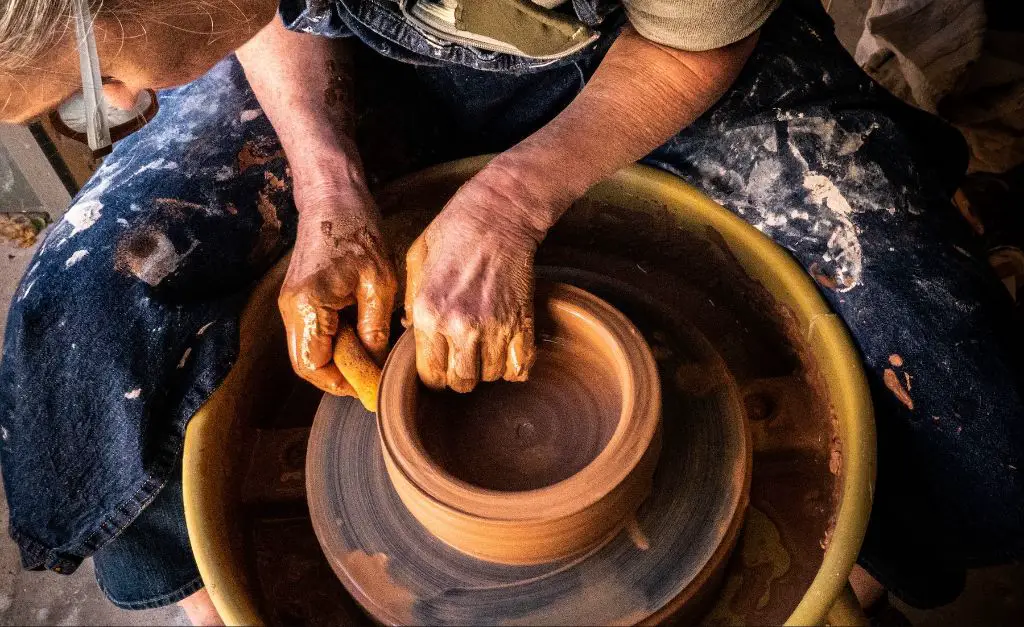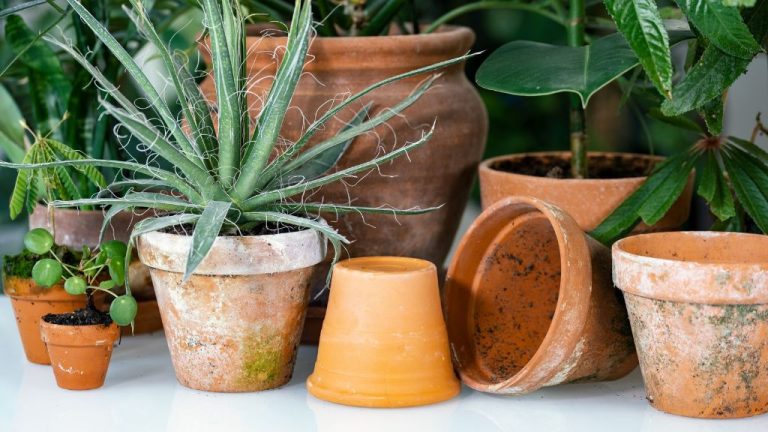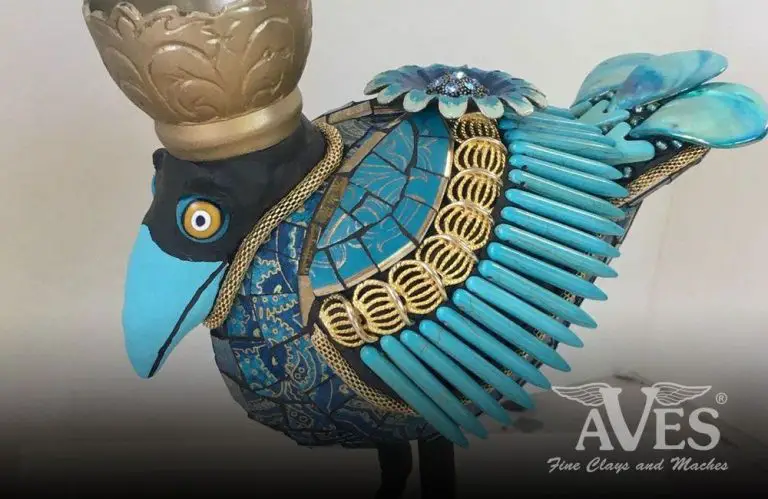Exploring Clay: From Earthenware To Porcelain
Introduction to Clay
Clay is a fine-grained natural rock or soil material that combines one or more clay minerals with possible traces of metal oxides and organic matter. Clays develop plasticity when wet, due to a molecular film of water surrounding the clay particles.
Some key properties of clay include:
- Plasticity – clay can be molded when wet and retains its shape when dried
- Porosity – clay can hold water and allow gases to pass through
- Shrinkage – clay shrinks as it dries
- Hardens when fired – clay becomes permanently hard when fired in a kiln
The earliest recorded use of clay for pottery dates back over 29,000 years ago to the Gravettian culture. Clay’s availability, workability and hardening when fired made it ideal for early pottery and ceramic uses. Clay continues to be an integral material for artists and artisans working in ceramics today.
Source: https://en.wikipedia.org/wiki/Pottery
Types of Clay
There are several main types of clay used in pottery, each with their own properties, characteristics, and uses. These include:
Earthenware
Earthenware is a basic clay body that has low shrinkage and fires at lower temperatures compared to other clays, ranging from 1800°F to 2100°F. It can be natural clay or a mixture of different clay minerals (wheelandclay.com). Earthenware is porous and less durable than stoneware or porcelain. It’s commonly used for flower pots, decorative tiles, and non-tableware items that don’t require high strength.
Stoneware
Stoneware clays are dense, with moderate shrinkage and plasticity. They fire at high temperatures ranging from 2200°F to 2400°F, making the finished product non-porous and watertight. This makes stoneware ideal for functional items like mugs, bowls, and plates that come in contact with food and liquids. The high firing temperature also makes stoneware very strong and durable (soulceramics.com).
Porcelain
Porcelain clays fire at the highest range, typically between 2250°F and 2350°F. It’s made of kaolin clay that fires into a translucent, glass-like product that is extremely hard and non-porous. The high kaolin content gives porcelain its white color. While fragile in its unprocessed form, porcelain becomes very strong after firing. It’s ideal for tableware, art pieces, and decorative objects.
Specialty Clays
Other clays like ball clays, fire clays, and casting clays have specific purposes. Ball clays have high plasticity for shaping and throwing. Fire clays can withstand the highest heat levels. Casting clays are formulated for slip casting. These are often blended with base clays like stoneware or porcelain to create clay bodies optimized for different needs.
Clay Composition
The chemical composition of clay varies depending on the type of clay, but all clays contain hydrated aluminosilicates and other minerals. The main elements in clay’s chemical makeup are silicon, aluminum, oxygen, and hydrogen, with other elements like potassium, sodium, calcium, magnesium, and iron present in some clays.
The two primary clay mineral groups are kaolinite and smectite. Kaolinite clays like kaolin contain kaolinite, quartz, and mica. They are less plastic and have lower shrinkage than other clays. Smectite clays like bentonite contain montmorillonite and have high plasticity and shrinkage1.
The exact mineral composition influences a clay’s plasticity, or its ability to be shaped and molded. Plasticity depends on the particle size distribution, the amount of water the clay will absorb, and the ability of plate-shaped clay particles to slide over one another. Highly plastic clays can be thrown on a pottery wheel. Low plasticity clays are better for molding and handbuilding. The mineral makeup also affects the temperature at which clay vitrifies or becomes ceramic.2
Shaping and Forming Clay

There are several techniques for shaping and forming clay into three-dimensional objects. The two main approaches are handbuilding and wheel throwing.
Handbuilding
Handbuilding involves shaping clay by hand without the use of a pottery wheel. There are three common handbuilding techniques:
- Pinching – Pinching is likely the easiest method for beginners. It involves taking a ball of clay and pinching it between fingers and thumbs to form basic shapes like bowls, cups, and vases.
- Coiling – With the coiling technique, long strands or coils of clay are stacked and joined together one by one. Coiling allows forming larger and more intricate hollow shapes.
- Slab Building – This method involves rolling out flat sheets or slabs of clay that can be cut, joined, and molded into shapes. Slab building is great for making flat surfaces and boxes.
Handbuilding gives the artist direct control and is good for making decorative, asymmetrical, or non-round shapes. Pieces can also be combined, with slabs joined to pinch pots for example. According to The Crucible, handbuilding is an accessible starting point for beginners to learn the fundamentals of working with clay.
Wheel Throwing
Wheel throwing involves using a potter’s wheel to shape clay into symmetrical forms. As the wheel spins, the artist uses their hands to mold the clay into cylinders, bowls, plates, and vases. This shaping method is ideal for making multiples of the same shape and size. Wheel throwing allows forming thin-walled pieces with smooth, uniform surfaces and takes considerable skill to master.
Molding
Clay can also be shaped using molds. Plaster, plastic, wood, and other materials can be molded to create a hollow form. Clay is pressed into the mold cavity to take on the exact shape. Molds enable efficiently making complex or repetitive shapes. The mold material impacts the clay’s surface texture. Molding also allows casting slipcast pieces in porcelain and stoneware.
Decorating Clay
Decorating clay is one of the most creative aspects of working with ceramics. There are many techniques that can be used to add color, texture, and design to finished ceramic pieces including glazing, slipping, engraving, and stamping.
Glazing is the process of applying a glass-like coating to bisqueware pottery before firing. Glazes come in various colors and effects and act to color, decorate, and waterproof the clay surface. Popular glaze techniques include dipping, pouring, brushing, and spraying the glaze onto the piece. Glazes melt and fuse to the clay body during the firing process to create the finished decorative surface. According to Ceramic Arts Network, “Decorating pottery is one of the most rewarding aspects of working in clay” [1].
Slipping involves applying a clay slip, which is a thin mixture of clay and water, to the bisqueware surface before firing. Slips can be colored using stains and oxides and are often used to accentuate texture. Sgraffito is a technique that involves scratching through a layer of colored slip to reveal the clay color underneath. Engraving and carving are other slipping techniques used to create pattern and design.
Stamping uses custom stamps and found objects to imprint textures and patterns into the clay. Stamped designs can be filled with colored slips or glazes to highlight the impressions. Inlay is another technique that presses materials like tiles, glass, and gold leaf into the wet clay to create decorative effects.
There are endless ways clay artists use these and other techniques to turn functional ware and ceramic sculpture into works of art. Decorating brings out the true creative potential with clay.
Firing Clay
One of the most important steps in working with clay is firing the finished pieces in a high temperature kiln. This process permanently hardens the clay through sintering, which fuses the clay particles together into a solid ceramic material.
Pottery kilns used for firing clay can either be electric or gas fueled. Electric kilns are common for home use as they are easier to install and operate. Prices for electric kilns start around $300 for small hobbyist models and increase for larger capacity professional models (https://www.soulceramics.com/collections/ceramic-kilns).
Firing clay involves gradually raising the temperature inside the kiln according to a predetermined schedule. Typical firing temperatures range from 1800°F to over 2300°F. The firing schedule specifies how quickly the temperature is increased, and what temperature plateaus are held at.
The atmosphere inside the kiln during firing also affects the finished ceramic. Oxidation firing involves ample air circulation, resulting in vibrant glaze colors. Reduction firing limits air supply, which produces darker colors and unique metallic effects. Kilns can be programmed for either oxidation or reduction firing cycles (https://ceramicartsnetwork.org/daily/article/Ten-Basics-of-Firing-Electric-Kilns).
Understanding the complexities of properly firing clay is essential for potters and ceramic artists seeking to master their craft.
Notable Clay Artists
Clay art has been around for thousands of years, but it continues to evolve thanks to innovative contemporary artists. Some of the most acclaimed clay artists working today include:
Edmund de Waal – Known for his minimalist porcelain installations, such as A Shape of Silence. De Waal uses porcelain to explore themes of memory and loss. His work is exhibited internationally.
Shio Kusaka – Kusaka’s ceramic sculptures play with positive and negative space, as seen in her “Infinity Net” series. Her meditative pieces bridge Eastern and Western aesthetics. Kusaka has exhibited at the Whitney Museum of American Art.
Roberto Lugo – A potter and social activist, Lugo merges ceramics with graffiti and hip hop culture. His work often uplifts people of color and confronts social justice issues, as seen in his Black Brown Woke series.
Other influential contemporary ceramic artists include Yun Hee Lee, known for nature-inspired sculptural wares, Aneta Regel, recognized for her innovative glazing techniques, and Coille Hooven, who blends ceramic tiles with painting and drawing.
Clay in Culture
Clay has played an important role in many cultures throughout history. Evidence of early clay use dates back over 25,000 years in Japan and Egypt. Clay objects like figurines, pots, and tablets were an integral part of ancient civilizations and served both functional and artistic purposes.
In ancient Egypt, clay was used not just for pots and sculptures but also to create writing tablets and even mummy masks. The ancient Greeks mastered the production of clay pottery and made elegant vessels for drinking, storing, and transporting goods. Chinese potters developed porcelain and perfected underglaze decoration methods as early as the 9th century CE (Source: https://www.lakesidepottery.com/HTML%20Text/brief%20history%20of%20clay_pottery.htm).
Many cultures have traditions of clay figurines and sculptures for ritual or spiritual purposes. Small clay dolls and statues were placed in ancient Greek and Roman tombs, while in Mesoamerica figurines and whistles were buried with the dead. West Africa has a long tradition of ceremonial clay masks and vessels. Clay continues to hold an important place in many living indigenous cultures.
Beyond the practical and decorative role of clay objects, the very act of shaping clay has symbolic significance in many cultures, representing divine creation and the human ability to bring form out of the earth. As an accessible and malleable material, clay allows creative expression across all cultures and time periods.
Clay Today
Clay is experiencing a renaissance in contemporary art and design. Curators and critics are showcasing innovative uses of clay in galleries, museums, and fairs around the world (Contemporary Ceramics – Artsy). Ceramic artists today are pushing the boundaries of traditional techniques and materials to create conceptual sculptures, installations, and functional wares.
Many contemporary ceramic artists blend digital technologies with handmade processes. Artists like Jonathan Keep manipulate 3D modeling software to design complex ceramic forms before fabricating them by hand. Others use 3D printing or CNC milling to produce one-off pieces and limited editions. This fusion of digital and analog allows for greater complexity and experimentation.
Sculptural approaches to clay are also prevalent today. Artists such as Sterling Ruby create large-scale ceramic installations that break from functional pottery traditions. Ceramic shards, slabs, and extruded components are arranged in expressive abstract compositions. The focus is on form, texture, and materiality rather than utility.
Moving forward, innovations in clay chemistry and kiln technologies will enable new directions. Recycled and sustainable clays, stronger and more diverse firing methods, and mixed media approaches will shape the future. But the fundamental malleability, tactility, and history of clay will continue to inspire ceramic artists and designers.
Getting Started with Clay
For beginners interested in getting started with clay, there are a few key tips to keep in mind. First, decide on the type of clay art you’d like to pursue – handbuilding, throwing on a wheel, sculpting, etc. This will determine what type of clay and basic starter supplies you’ll need.
Beginners can start with basic air-dry clays which require little equipment. Polymer clays that cure in a home oven are another option requiring minimal tools. For high fire clay that needs a kiln, consider taking a class at a local pottery studio that provides kiln access [1]. Studio classes are a great way to learn techniques from experienced artists and meet a community of fellow clay enthusiasts.
For setting up a beginner studio at home, basic starter tools include clay sculpting tools, a pottery wheel if doing wheel throwing, clay cutting wires, ribs and slip tools, a work surface like a canvas or wood board, and clay storage containers. Protective equipment like an apron, gloves and a face mask are also recommended [2].
To continue expanding clay skills and knowledge, look for instructional books and videos. Connect with other potters through local classes or online communities. Experiment with different types of clay and techniques to find your favorites. Most importantly, have fun unleashing your creativity with this versatile, engaging art form!


